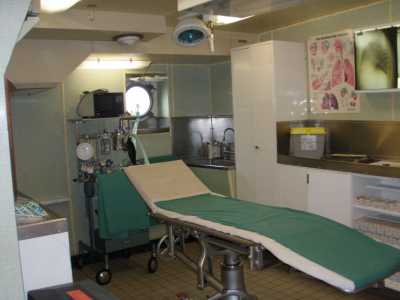MedicalResearch.com Interview with:
Christian de Virgilio, MD
LA BioMed lead researcher and corresponding author for the study
He also is the former director of the general surgery residency program
Harbor-UCLA Medical Center and the recipient of several teaching awards.
MedicalResearch.com: What is the background for this study? What are the main findings?
Response: Recent forecasts have predicted the United States will have a deficit of as many as 29,000 surgeons by 2030 because of the expected growth in the nation’s population and the aging of the Baby Boomers. This expected shortfall in surgeons has made the successful training of the next generation of surgeons even more important than it was before. Yet recent studies have shown that as many as one in five general surgery residents leave their training programs before completion to pursue other specialties.
Our team of researchers studied 21 training programs for general surgeons and published our findings in the Journal of the American Medical Association Surgery (JAMA Surgery) on August 16, 2017. What we found was the attrition rate among residents training in general surgery was lower than previously determined – just 8.8% instead of 20% – in the 21 programs we surveyed. Our study also found that program directors’ attitudes and support for struggling residents and resident education were significantly different when the authors compared high- and low-attrition programs.
General surgeons specialize in the most common surgical procedures, including abdominal, trauma, gastrointestinal, breast, cancer, endocrine and skin and soft tissue surgeries. General surgery residency training follows medical school and generally requires five to seven years. The programs are offered through universities, university affiliated hospitals and independent programs.
In this study, the research team surveyed 12 university-based programs, three program affiliated with a university and six independent programs. In those programs, 85 of the 966 general surgery residents failed to complete their training during the five-year period the research team studied, July 1, 2010 to June 30, 2015. Of those who failed to complete their general surgery training, 15 left during the first year of training; 34 during the second year, and 36 during the third year or later.
Notably, we found a nearly seven-fold difference between the training program with the lowest attrition rate, 2.2%, and the one with the highest rate, 14.3%, over the five-year period surveyed. In the programs with lower attrition rates, we found about one in five residents received some support or remediation to help ensure they would complete their
https://medicalresearch.com/author-interviews/reduction_in_surgical_residents_work_hours/4475/ In the programs with higher attrition rates, the research team reported that only about one in 15 residents received such remediation.
(more…)


